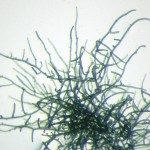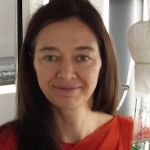Link to Pubmed [PMID] – 25260923
Microb. Ecol. 2015 Feb;69(2):234-44
Cyanobacteria-dominated microbial mat communities thrive widely and year round in coral reefs and tropical lagoons, with periodic massive development of benthic blooms. We studied the diversity and spatiotemporal variation of the cyanobacterial dominance in mats of the shallow lagoon of La Réunion Island in the Indian Ocean by means of denaturing gradient gel electrophoresis and cloning-sequencing approaches targeting the 16S rRNA gene, combined with macromorphological and micromorphological characterization of corresponding phenotypes. The mat-forming cyanobacteria were highly diversified with at least 67 distinct operational taxonomic units identified in the lagoon, encompassing the entire morphological spectrum of the phylum Cyanobacteria, but with striking dominance of Oscillatoriales and Nostocales. It appeared also that selective pressures acting at different geographical scales have an influence on the structure and composition of these mats dominated by cyanobacteria. First, large changes were observed in their diversity and composition in relation to local changes occurring in their environment. Second, from the data obtained on the richness and composition of the mats and from the comparison with similar studies in the world, tropical mats seem to display wider cyanobacterial richness than in temperate and cold areas. Moreover, these tropical mats share more species with mats in other tropical regions than with those in temperate and cold climatic regions, suggesting that marine cyanobacteria in biofilms and mats display a biogeographic structure.



